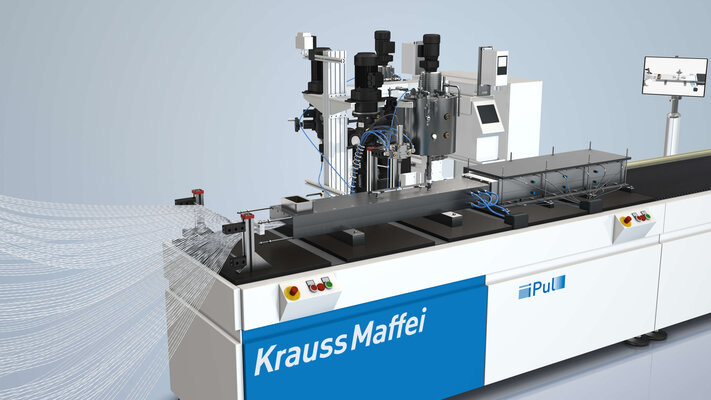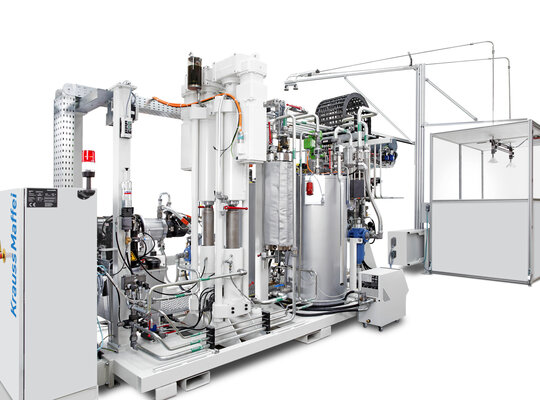Product information
KraussMaffei offers a broad portfolio of technologies for manufacturing fiber-reinforced composites that combine high strength, low weight, and design flexibility. These processes are designed for automated, reproducible, and cost-efficient series production.
Fiber reinforced
Structural Composite Spraying (SCS/FCS) stands for innovative lightweight construction technology that offers high design flexibility and efficiency. By precisely combining fiber and polyurethane application, components with excellent mechanical properties and high-quality surfaces are created – ideal for applications ranging from small to large series.
Key Features – SCS/FCS
- Integrated in-mold decoration for finished surfaces (Class A)
- Lightweight construction with high flexural stiffness thanks to honeycomb core
- Short cycle times due to patented nozzle system
- Cost-efficient for medium to high production volumes
- Open mold process: fibers and PUR are sprayed into a negative mold
- Flexible layer design: filled, unfilled, or foamed
- Fiber dosing: coaxial into the PUR stream for optimal wetting
Pultrusion is a continuous manufacturing process for producing fiber-reinforced plastic profiles with high precision and efficiency. With KraussMaffei’s innovative iPul system, both straight and curved profiles can be produced at speeds of up to 3 m/min – ideal for applications in construction, mobility, and energy. The combination of highly reactive matrix systems and well-engineered plant technology opens up a new dimension of productivity in the composites sector.
Key Features – Pultrusion
- Continuous process: constant cross-sections (e.g., profiles, pipes)
- Fiber-reinforced composites: combination of continuous fibers and resin
- In-die curing: curing directly within the heated mold
- High production speed with consistent quality

The Long Fiber Injection (LFI) process enables the cost-efficient production of large, fiber-reinforced components with high stability and excellent surface quality. In this process, continuous fibers are cut inline, separated with air support, and immediately wetted with a polyurethane matrix. The combination of high design flexibility, variable fiber lengths, and moderate tooling costs makes LFI particularly attractive for applications in the automotive, construction, and commercial vehicle sectors.
Key Features – LFI
- Long fibers (20–100 mm) are chopped inline and mixed with PUR
- Open mold process: spray or pour application guided by robots
- Fast curing: cycle times of just a few minutes
- High stiffness at low weight




